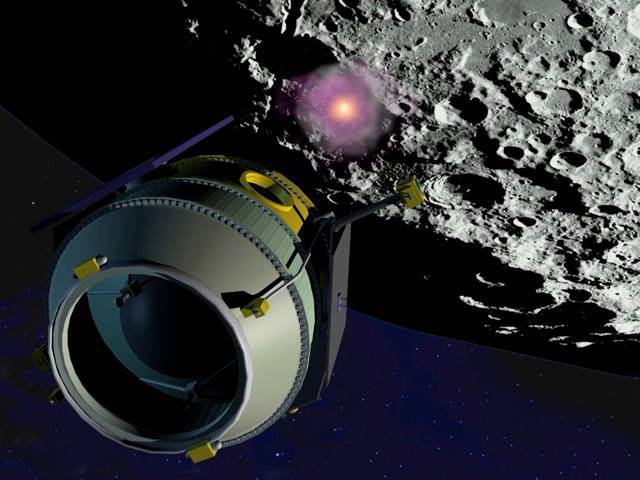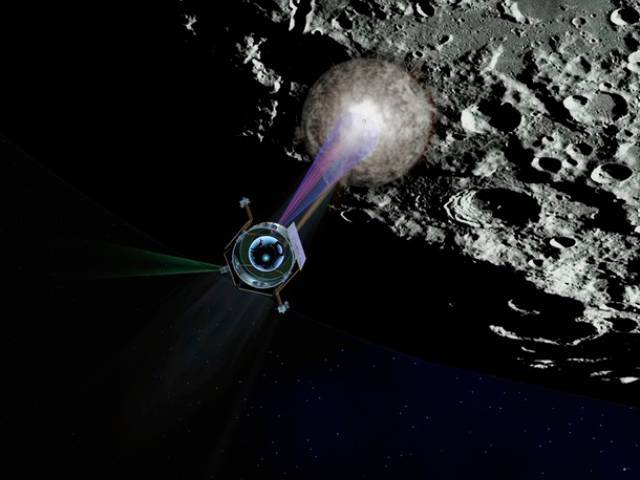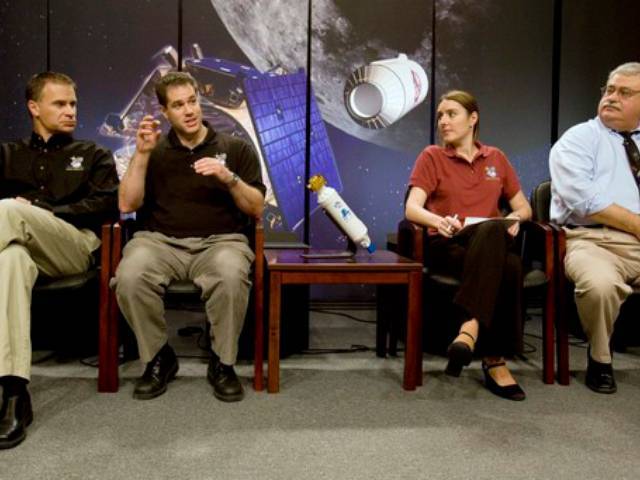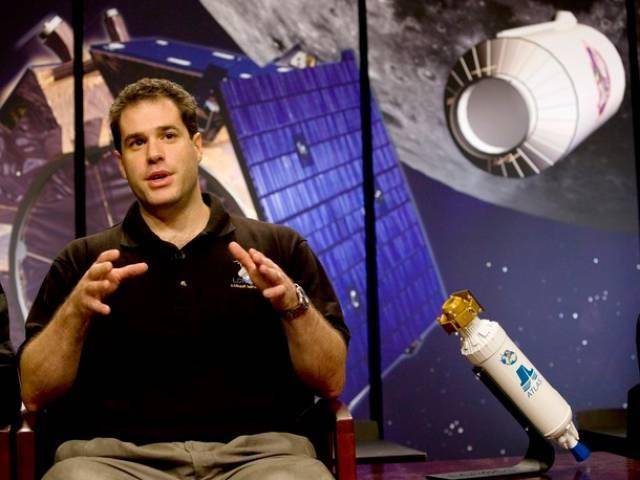November 13, 2009 - Making the announcement at Ames Research Center at Moffett Field near San Francisco, California, NASA revealed to the world that it had discovered water on the moon, marking a new chapter in Mankind's understanding of solar systems as well as space exploration, one that could take us one step closer to developing a lunar space station.
"I'm here today to tell you that indeed, yes, we found water. And we didn't find just a little bit, we found a significant amount" said project scientist Anthony Colaprete as he held up a dozen, two-gallon bucketfuls of water held in white plastic containers.
The findings are based on preliminary data collected with the intentional crash of the Lunar Crater Observation and Sensing Satellite (LCROSS) on October 9 into the permanently shadowed region of Cabeus crater near the moon's south pole. When the satellite struck the crater, a rocket flew through the debris cloud, measuring the amount of water and collected other points of data regarding what was on the lunar surface.
The project team concentrated on data from the satellite's spectrometers, which provide the best information about the presence of water: A spectrometer helps identify the composition of materials by examining light they emit or absorb.
The goal of the $79 million mission was to primarily determine whether there waswater on the moon, but the confirmed results have implications on various developments Mankind can make in the field of space exploration.
NASA "The discovery opens a new chapter in our understanding of the moon"
Michael Wargo, chief lunar scientist at NASA headquarters in Washington, said the latest discovery also could unlock the mysteries of the solar system.
He listed several options as sources for the water, including solar winds, comets, giant molecular clouds or even the moon itself through some kind of internal activity. The Earth also may have a role, Wargo said.
"If the water that was formed or deposited is billions of years old, these polar cold traps could hold a key to the history and evolution of the solar system, much as an ice core sample taken on Earth reveals ancient data,"
"In addition, water and other compounds represent potential resources that could sustain future lunar exploration."
Why is having Water on the Moon so significant?
Water has been and remains the single most critical component in any manned space mission. It has multiple applications besides quenching human thirst, as it is essential for the operation of machinery as well.
The other critical elements like air/oxygen can be compressed which allows us to bring less food by volume in space travel. As such, fuel and water are the two most cost-intensive resources Man needs to bring to space.
Simply put, the less we need to bring the better... to the Moon and beyond!




















SENATUS Member Comments